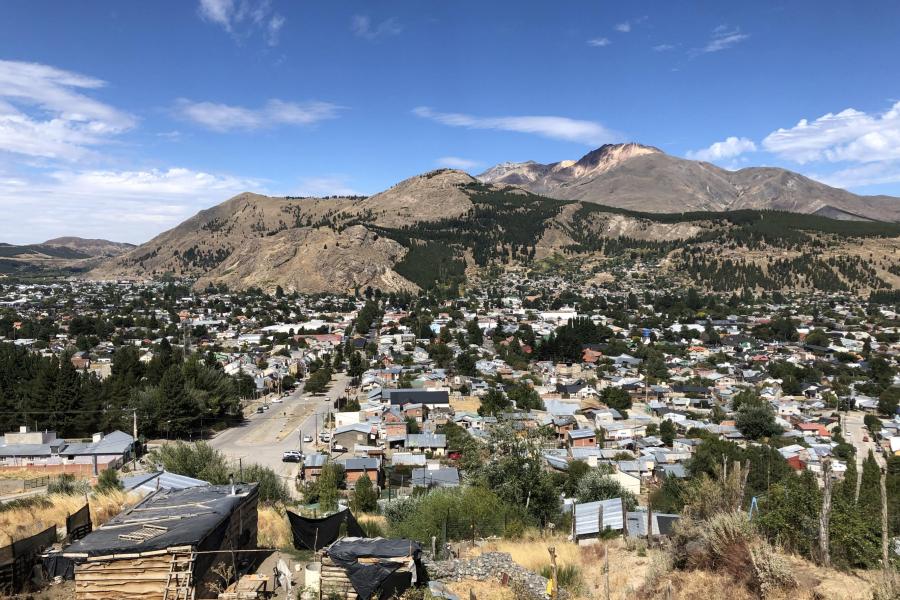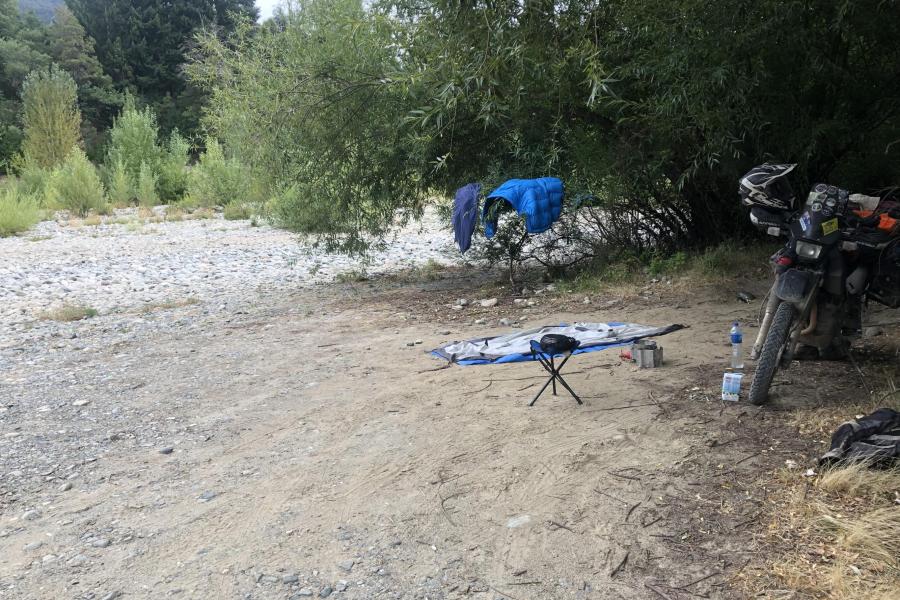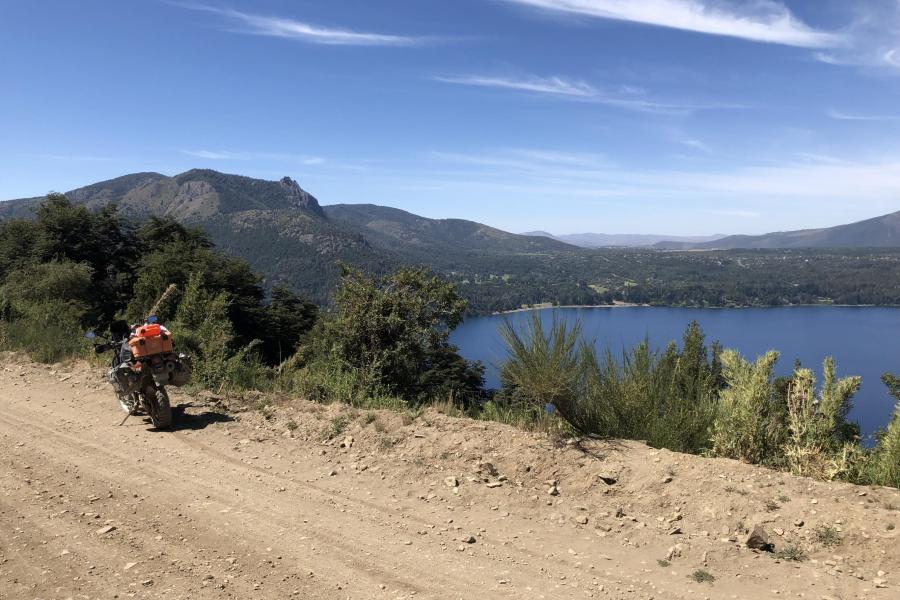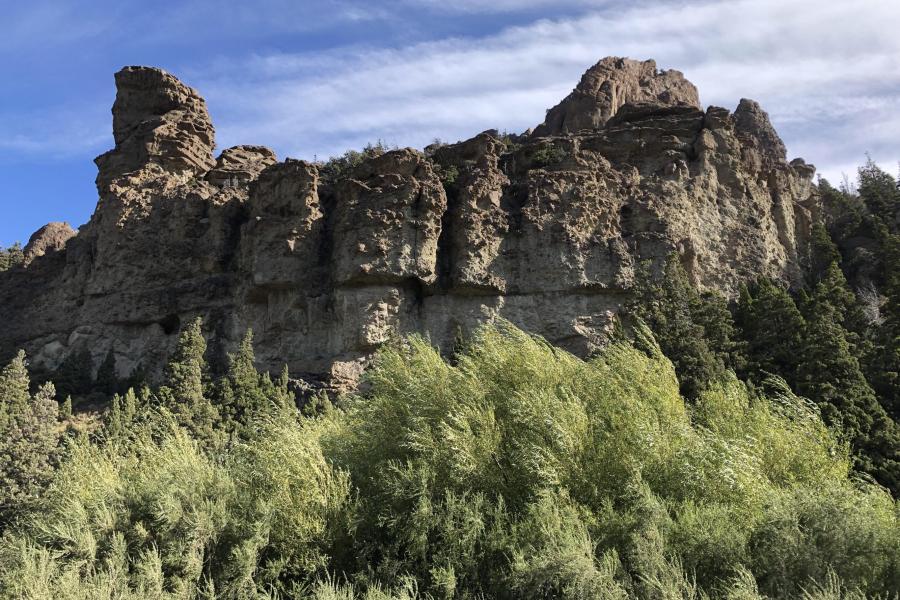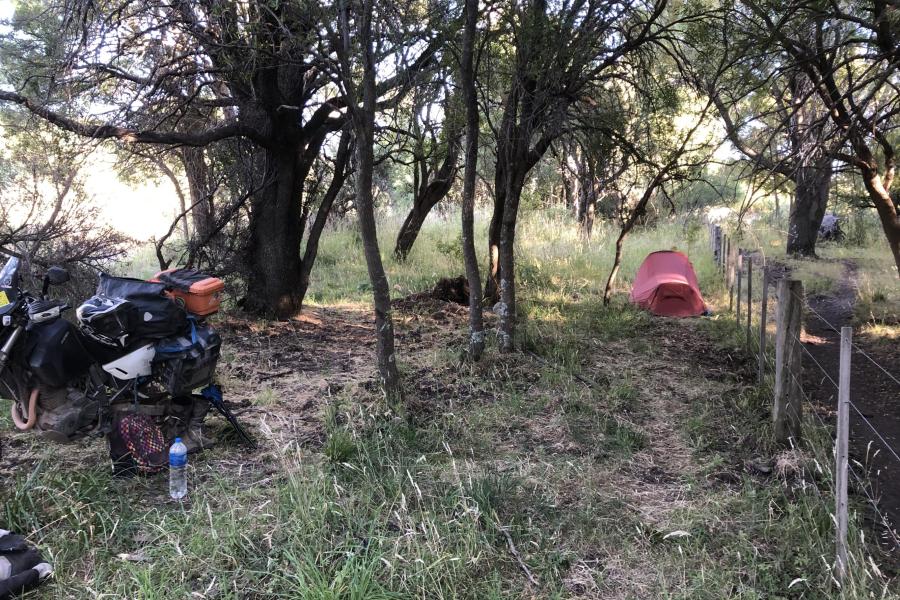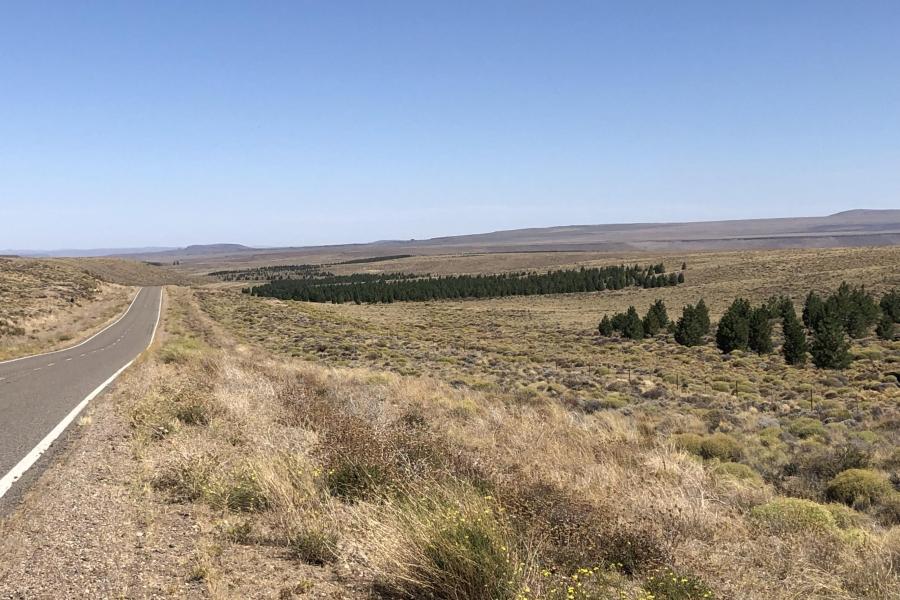Argentina, Las Lajas → Chile
Country
The old wheels spun around a heap of times heading south on Route 40.
For the most part the scenery was gently interesting rather than mind blowing.

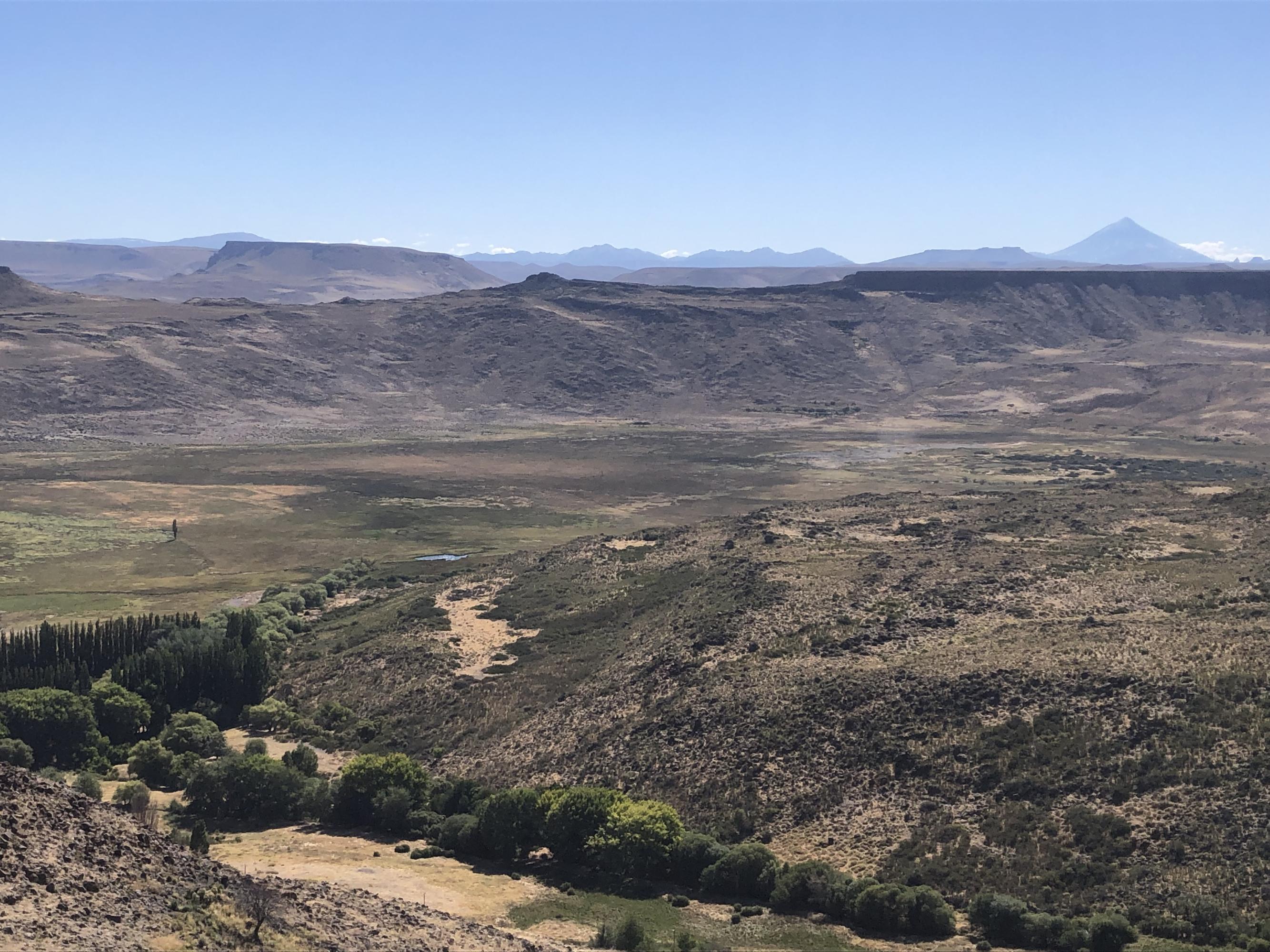
Yellow stars painted on the tar - how come? Not quite the Hollywood walk of fame - folk who had perished in collisions. This spot had two from the same family, one facing each way. Just like the myriad shrines, also on a dead (!) straight road.
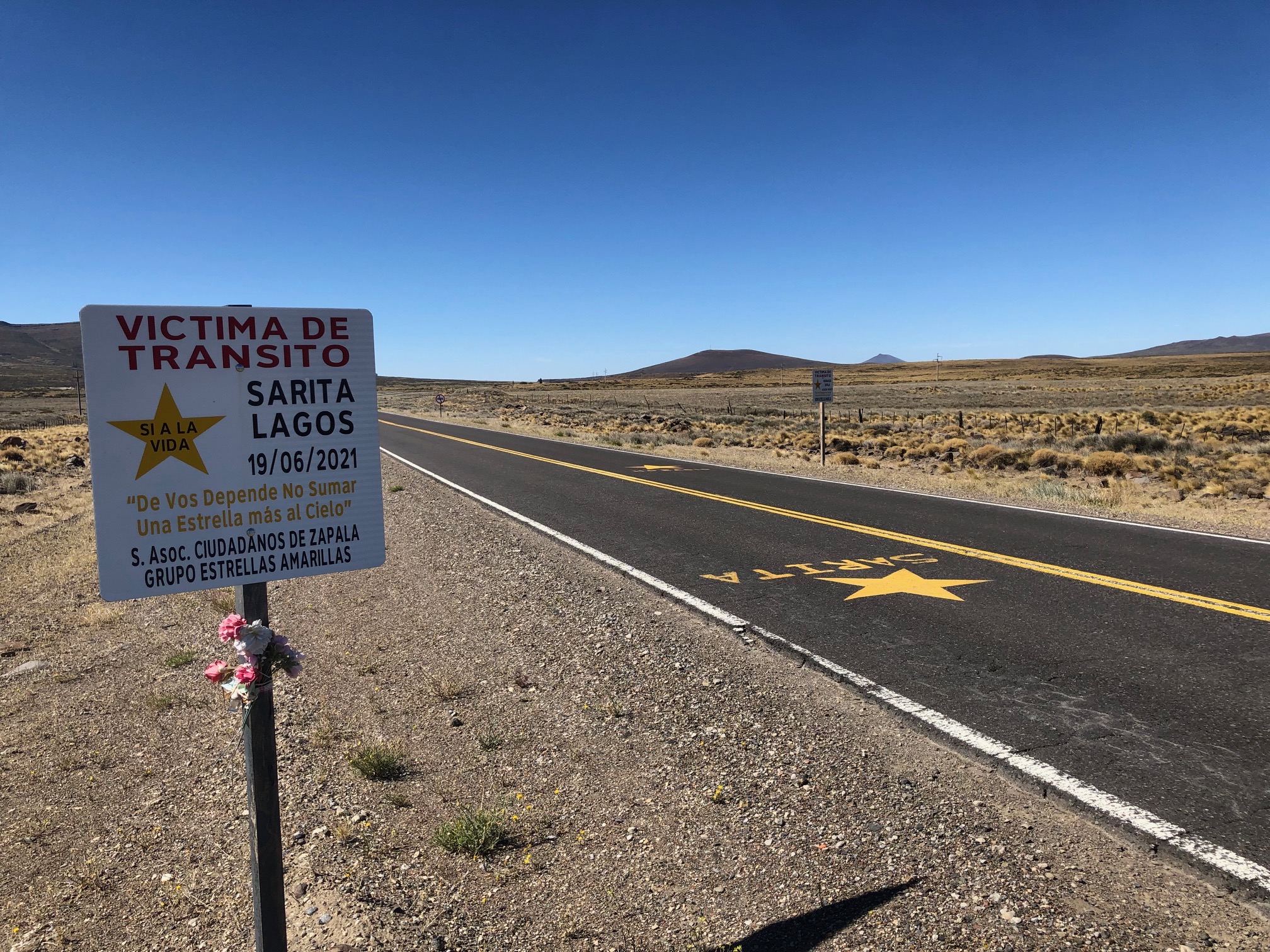
At the T intersection at La Rinconada I must have been on auto pilot. By and by the eyeballs saw a highway sign with “RN234 15”. Ah bugger, on the wrong road. Or was I? I waved down a fellow overland rider, pointed down and asked “quarenta?”. He replied “Sí”, but there could have been a misunderstanding. Return 15km to get back on RN40.
Somewhere around those parts an invisible latitude line shared with Emerald was crossed. From then on, I’d be moving further from home.
Days were still pleasantly sunny, but being further south gradually cooled the air on the move. This and lower altitude handed back some power.
It was a delight to once again squeeze the right hand in top and punch past traffic, the old girl giving a deep honk. Fewer “sheeeeet, this’ll be close” moments watching oncoming grilles. No need for another yellow star.
Pine trees made a reappearance, further signalling a cooler climate. At first they were in young plantations, all of uniform height.
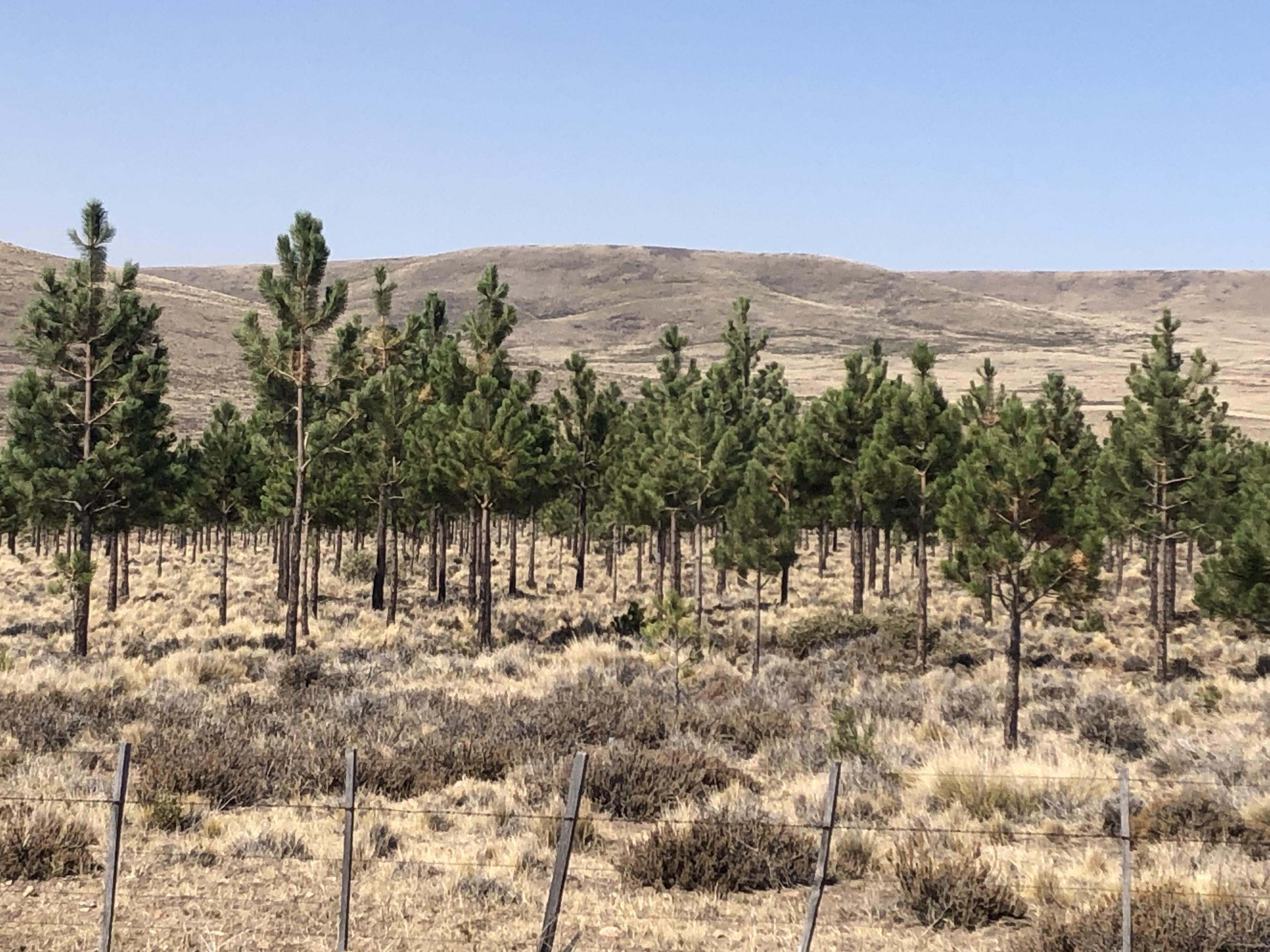
Soon enough naturally occurring conifers became the norm.
Reaching the edge of Patagonia at San Martin de los Andes brought stark changes. Sparse traffic became streams of new SUVs. International brand names showed on shop signs.
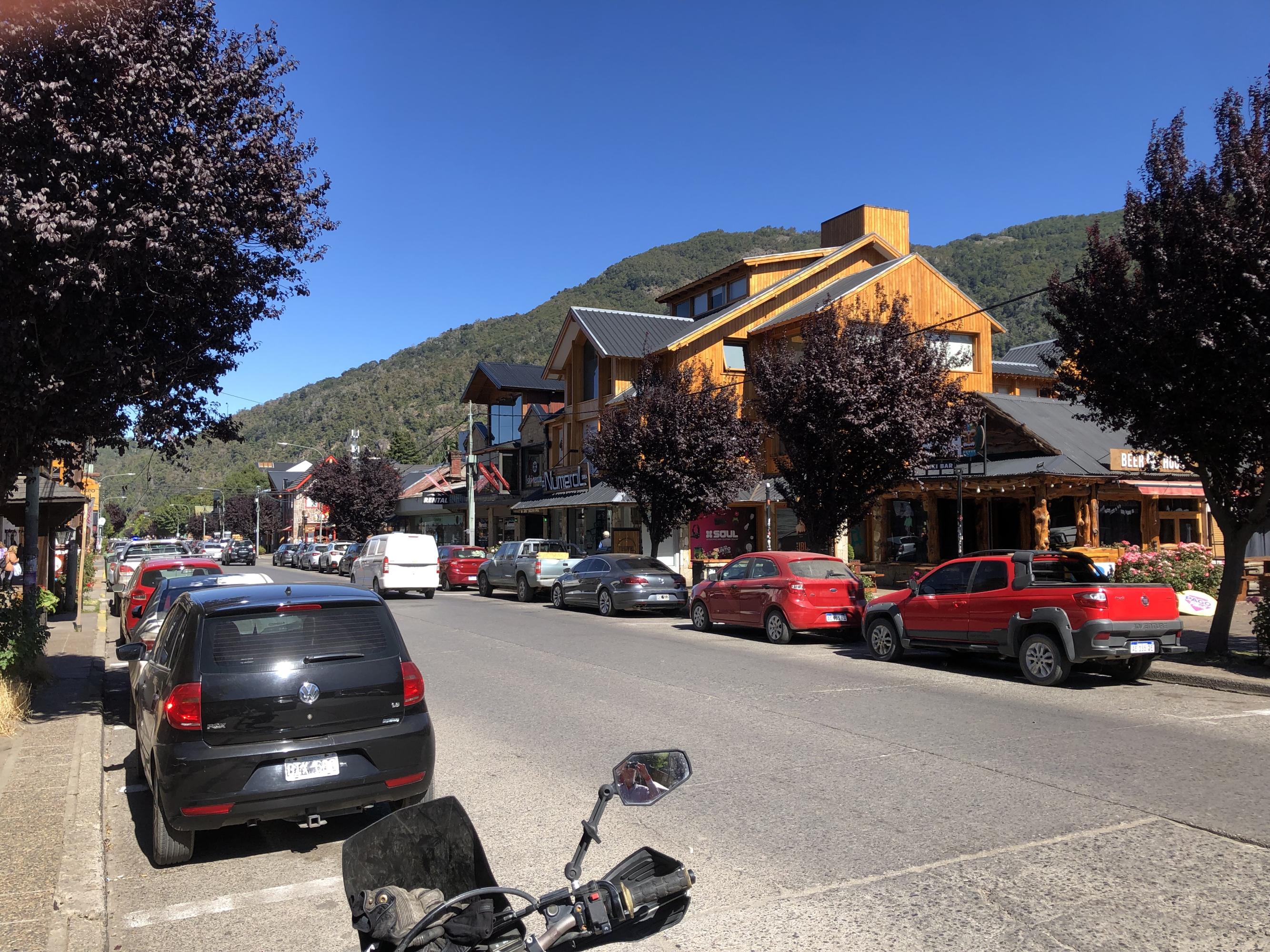
It was easy to understand the crowds; this was the start of the Seven Lakes area. A warning dear reader - many shots of water from here on.

A lunchstop at Lake Gutiérrez.
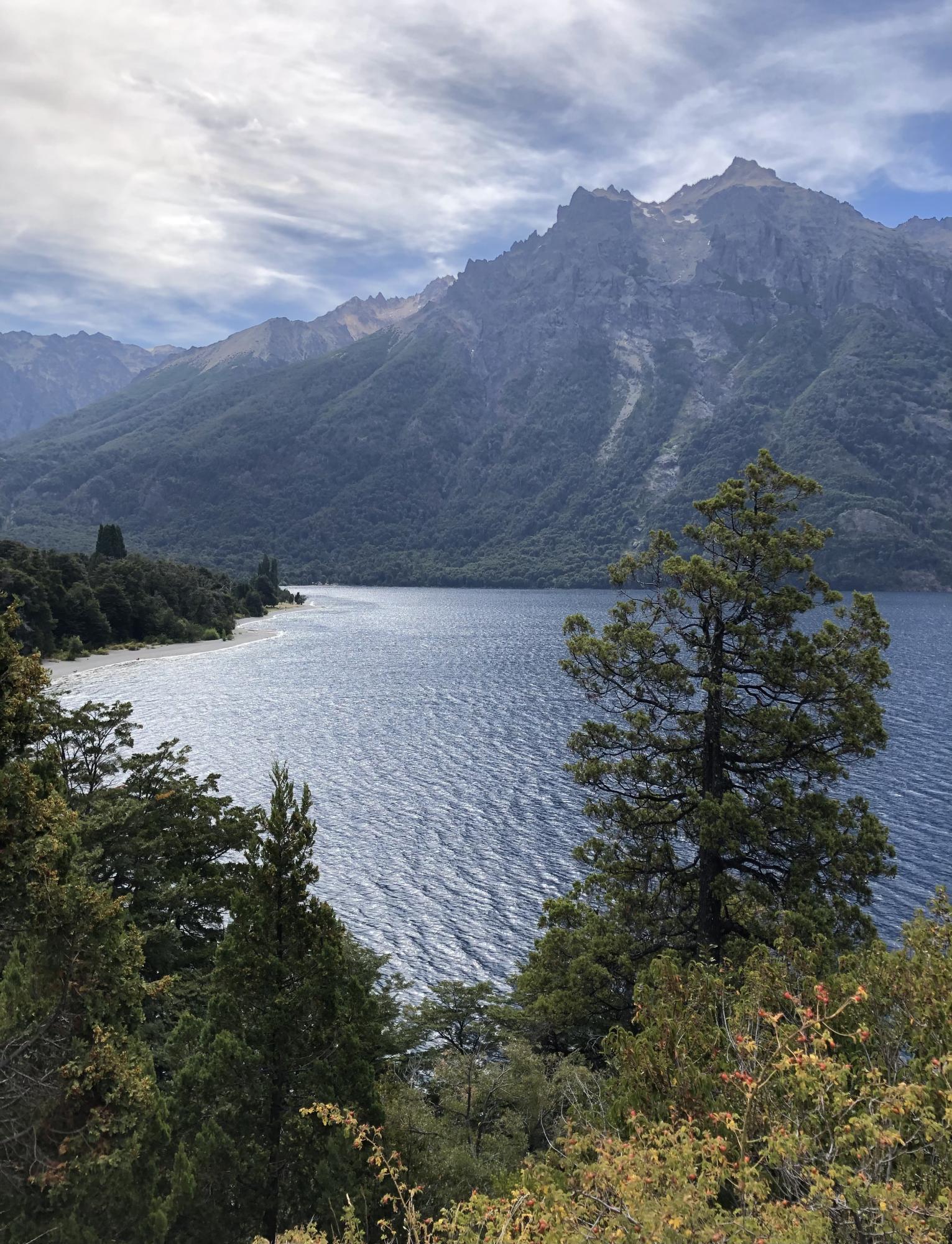
It’s hard to see in the photo, but there was a slight haze in the air. Further along it was a big haze - wildfires were spreading much smoke over the lake.
Many visitors were enjoying Nahuel Hualie NP. RVs had been rare to date and suddenly they were everywhere. I’m sure I hadn’t spotted a caravan since the USA (unless it was serving food!).
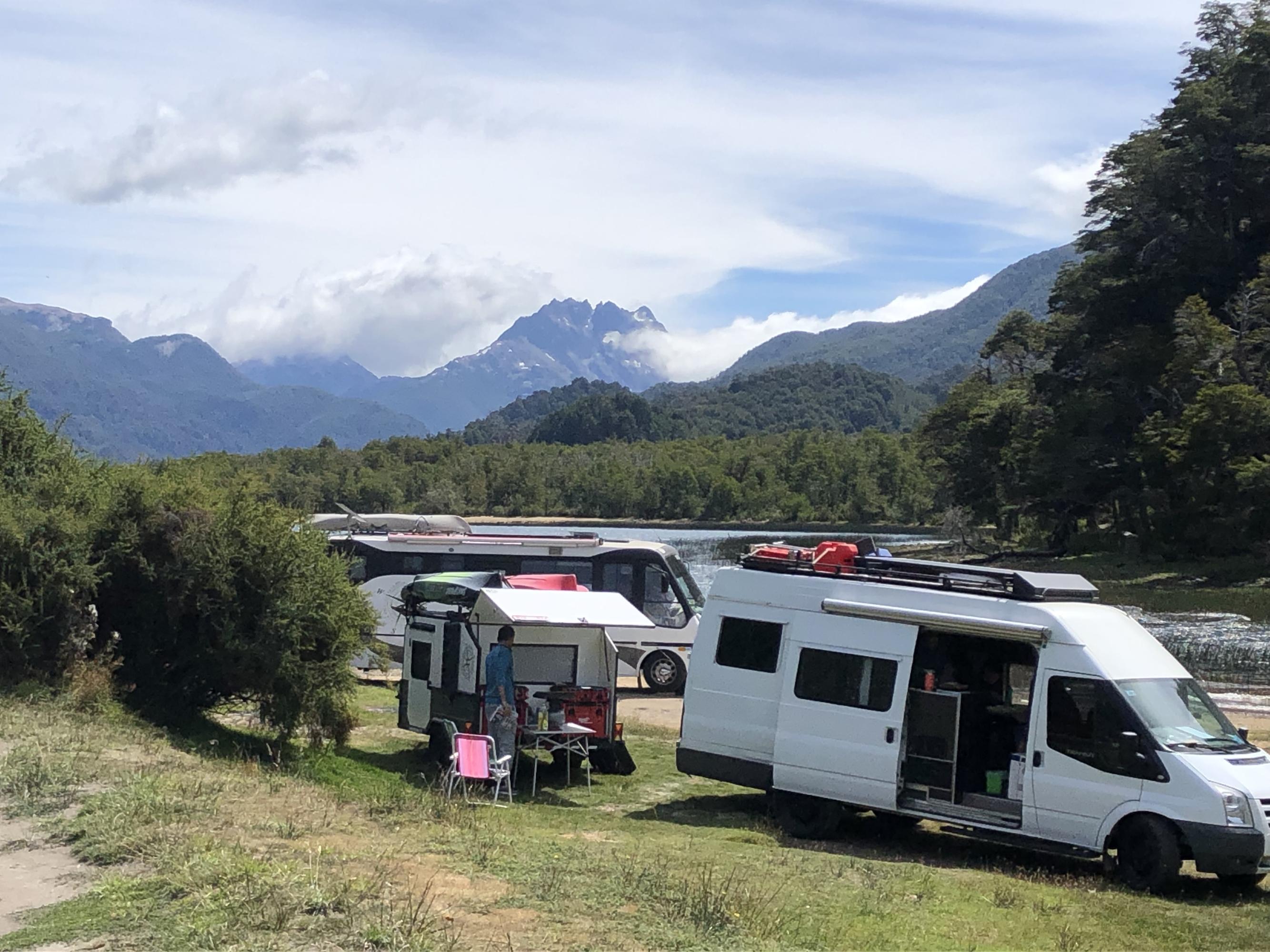
It amused to witness sunbathers on a beach so far inland.
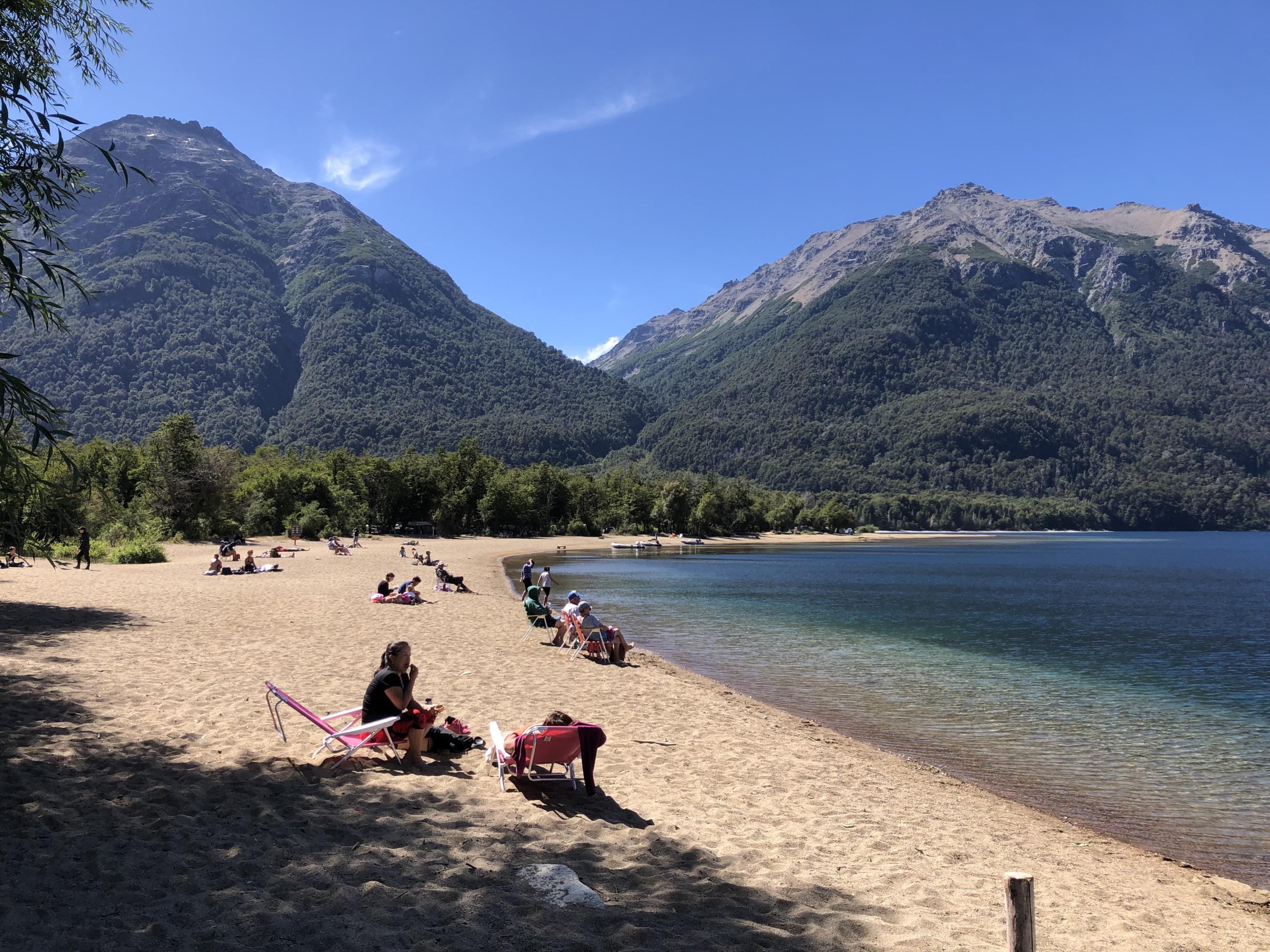
Just for a change of pace, I whizzed down a dirt road beside Lake Meliquina. A porridge breakfast by a stream in morning sunshine hit the spot.
The only bummer was finding my sneakers no longer strapped to the back. This has been a lesson relearned many times since Aussie travels: anything held by elastic on dirt roads has to be dispensable.
A slow return over the 15km standing up scanning left and right was fruitless. Within moments every rock and shadow resembled a wayward shoe. It frazzled the brain.

The Grand Loop departs from RN40, going past Villa Traful and it’s namesake lake.
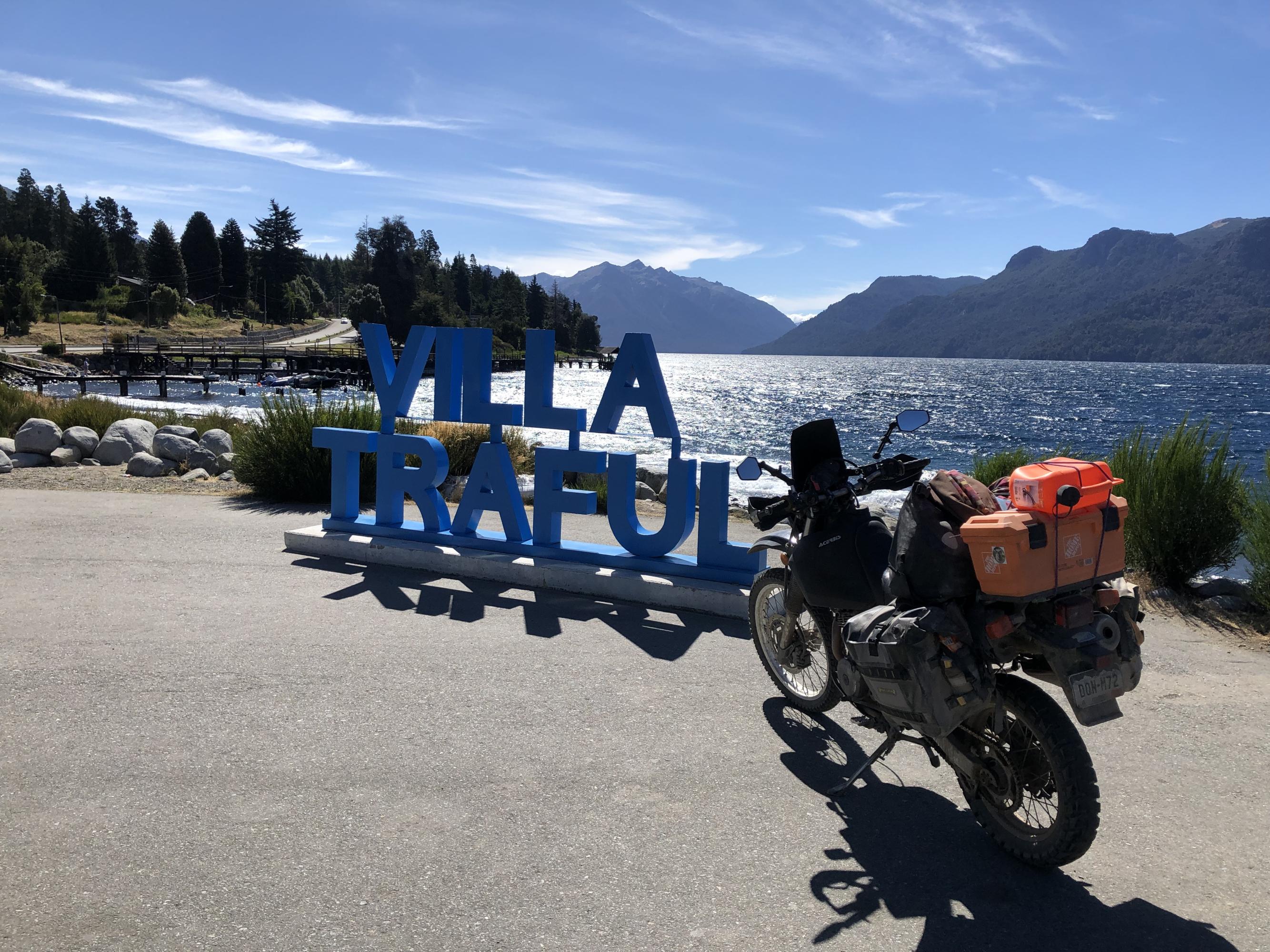
This was a mix of new tar, roadworks and easy but dusty dirt. Interesting rocks appeared.
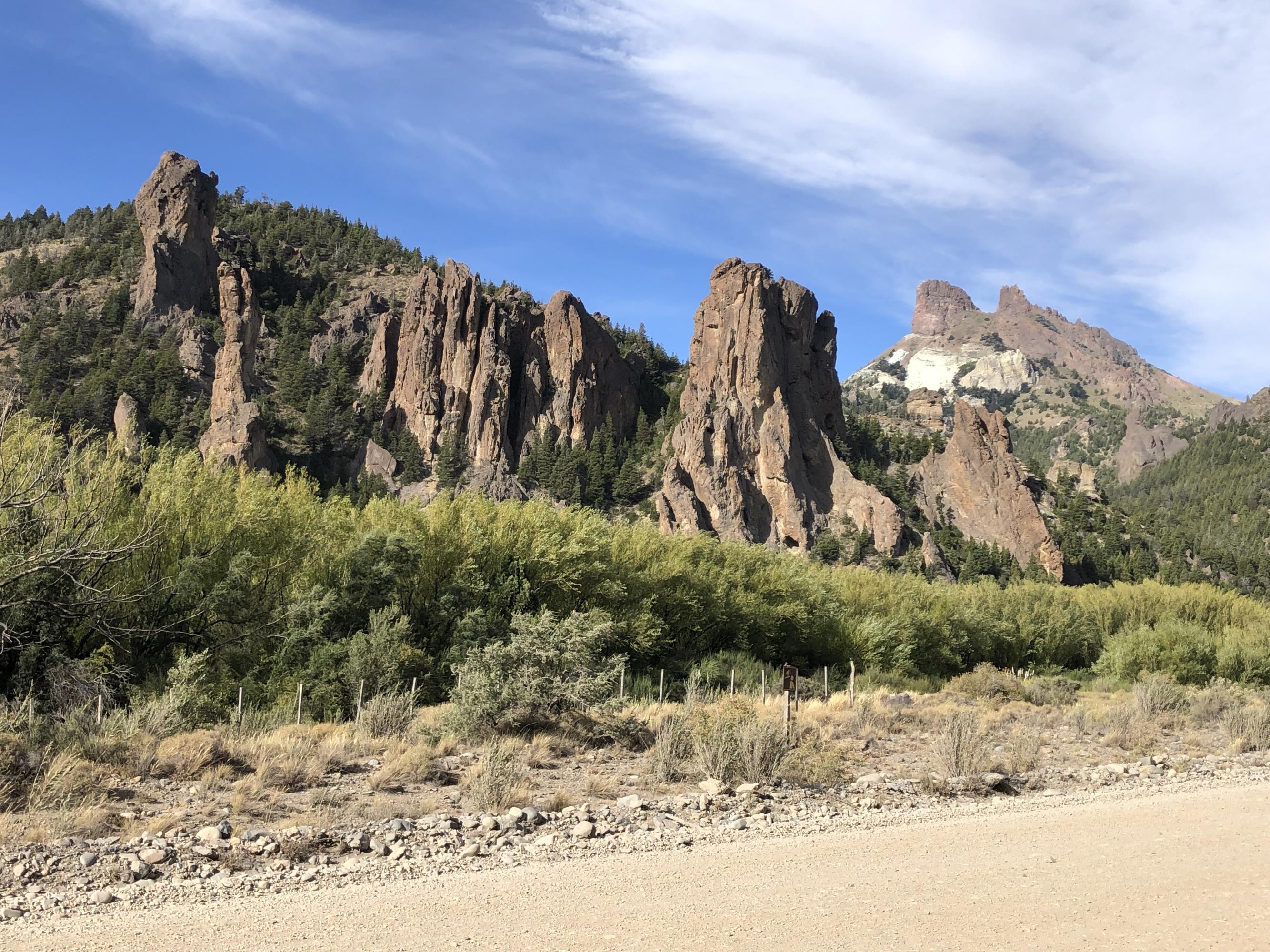
Bariloche is the main city on the Seven Lakes route, itself beside glacial Lake Nahuel Huapi. It’s a pretty darn expensive tourist town that I might normally avoid. However Sunday night is sacrosanct - dad, Michelle and I have our Zoom chat, so a good wifi connection in a hotel to see their handsome faces is mandatory.
Just out of Bariloche is the Chico Circuit, a favourite of cyclists. Its 60 km loop shows off lakes, beaches and mountains.
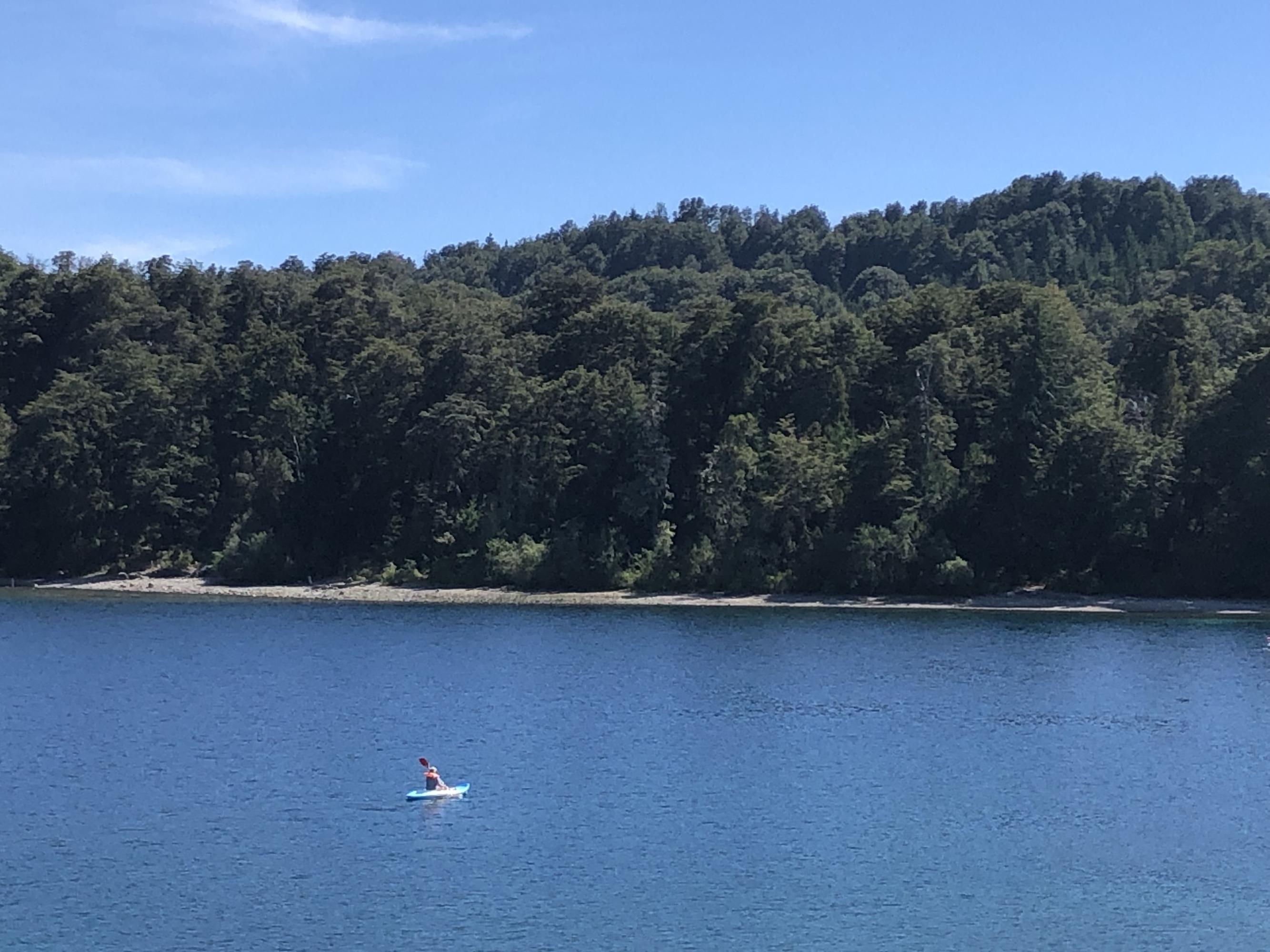
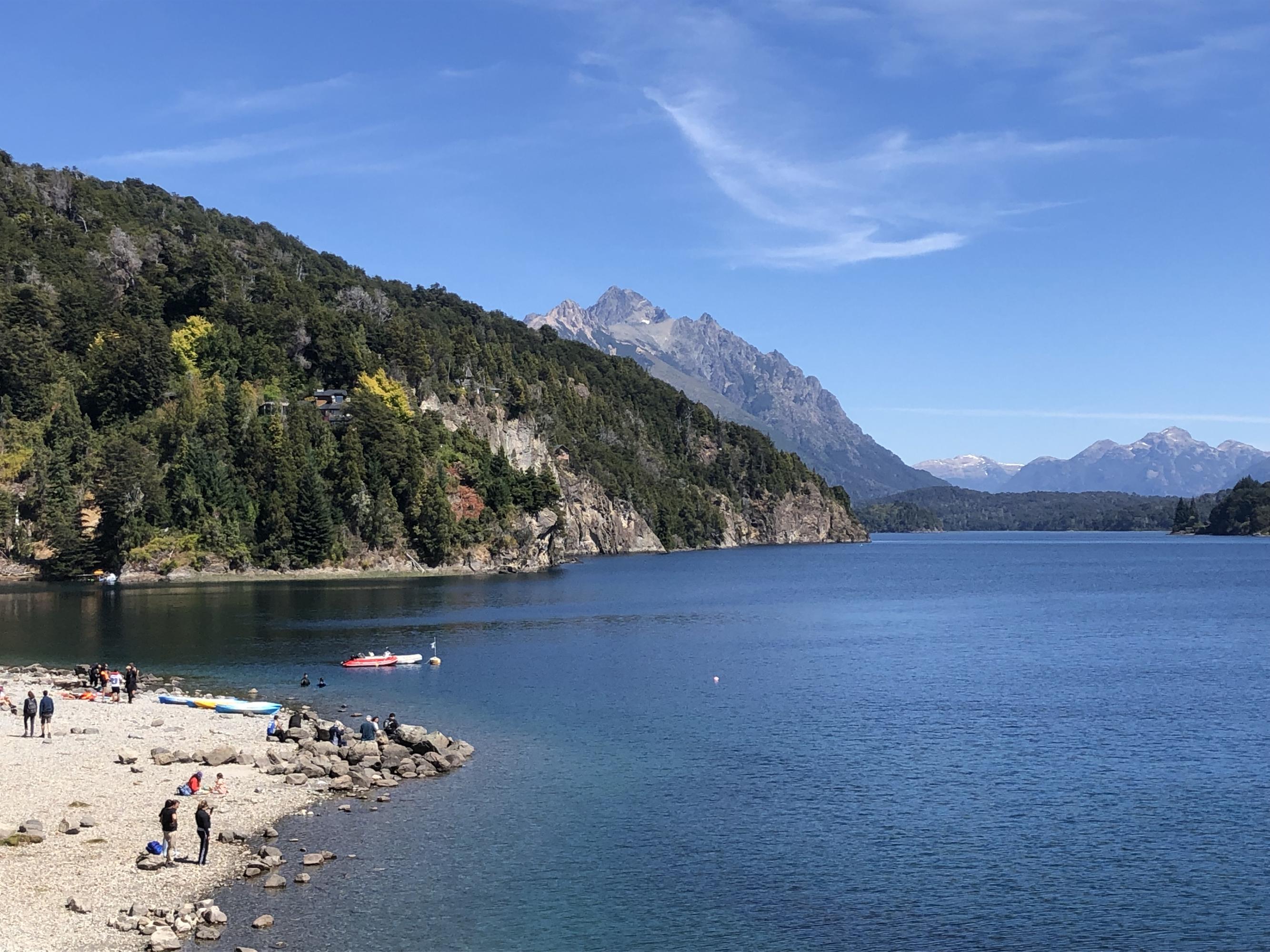
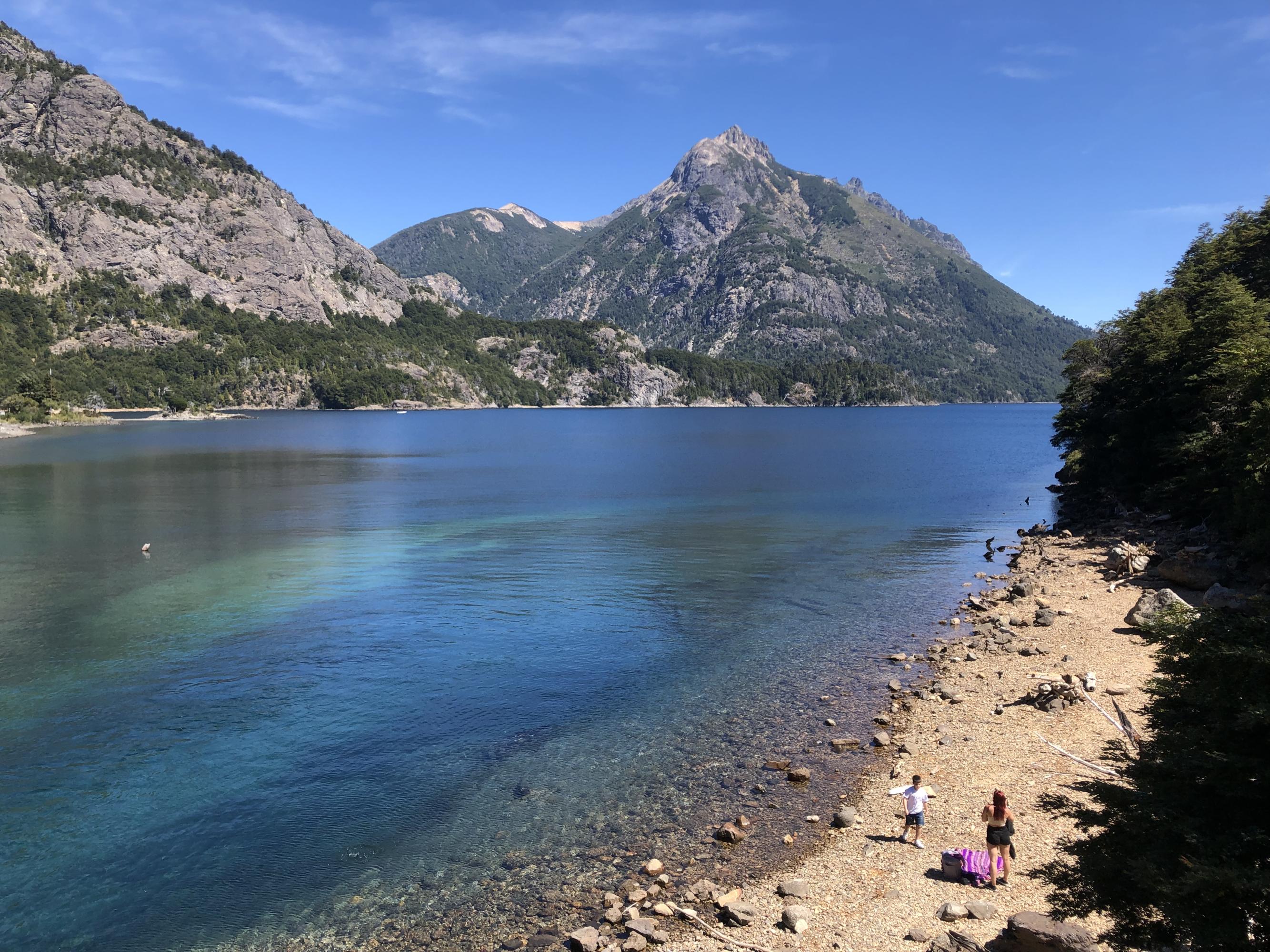
I bumped into three blokes from London on a several month South American holiday. One’s mother ran a nursery and all worked for her. Over half the conversation was about plants. Did you know that Western Australia has a carnivorous plant? Now I do.
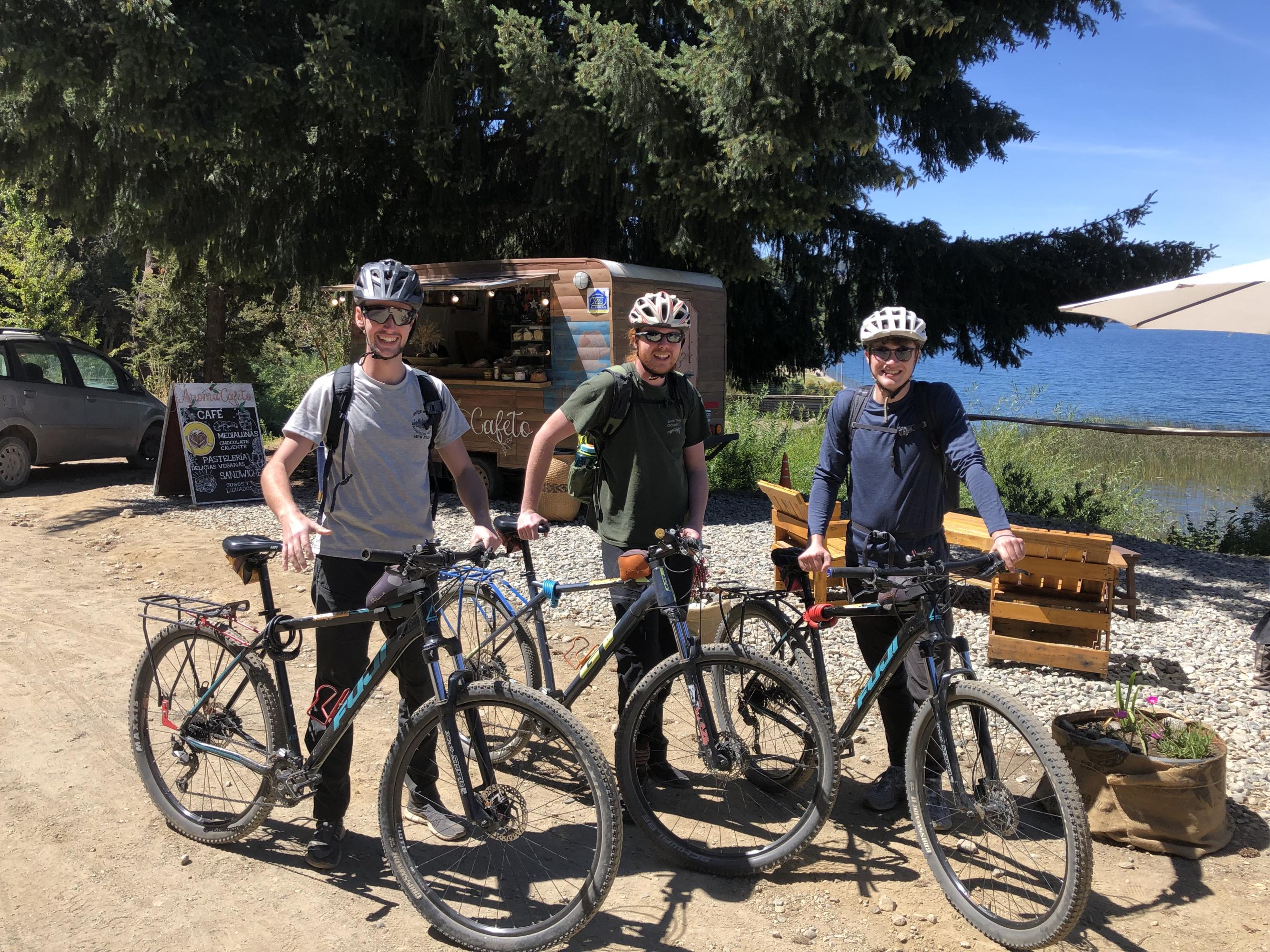
One bloke had a tattoo of a Wollemi Pine branch up his forearm. He’d never been to Australia, just loved the tree.
For a while road signs had warned of compulsory tyre chains and icy roads - pretty incongruous with the generally warm weather.
Similarly out of place was a ski resort.
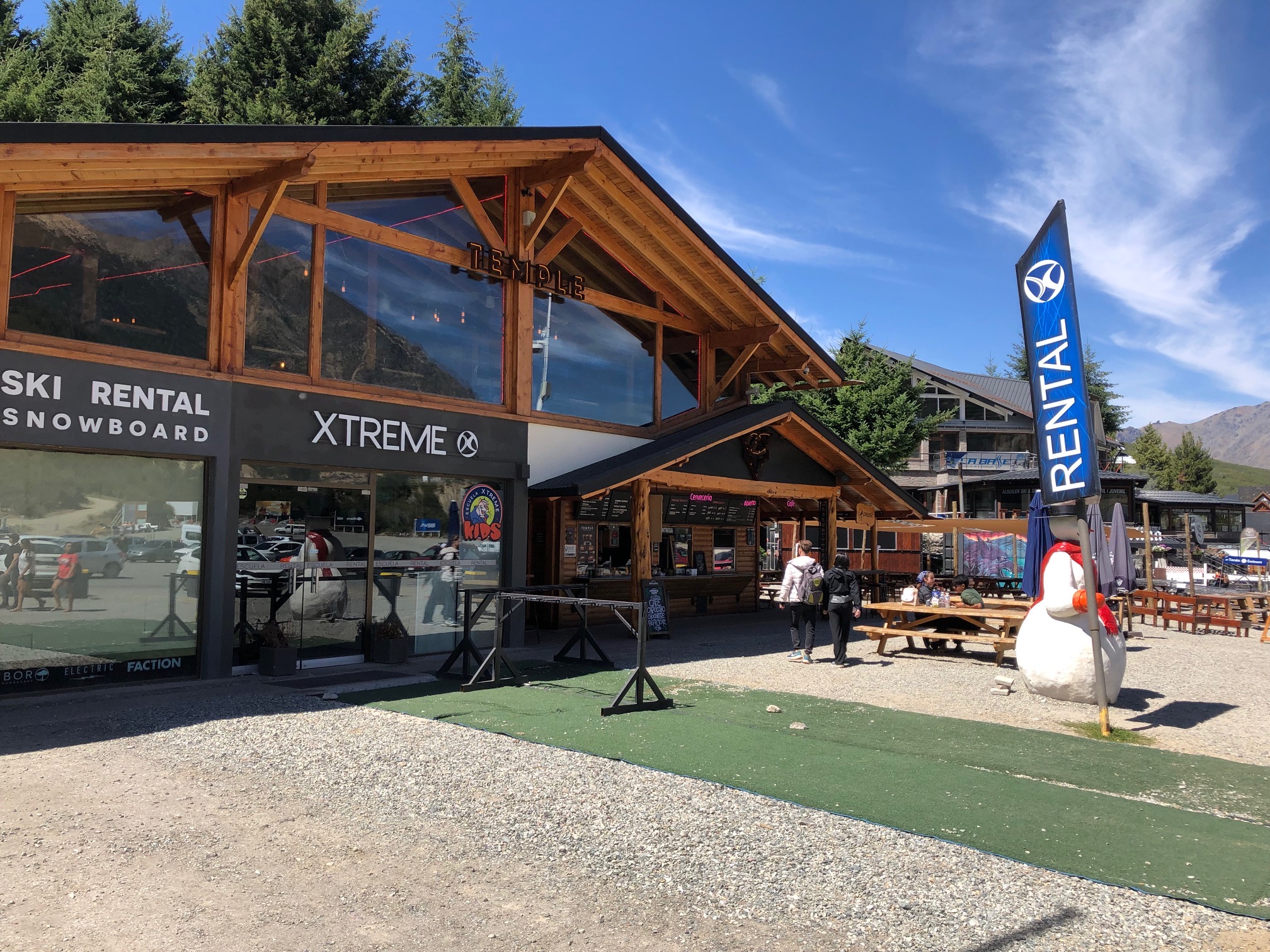
Naturally in summer there were more mountain bike riders than skiers. Even little ones.
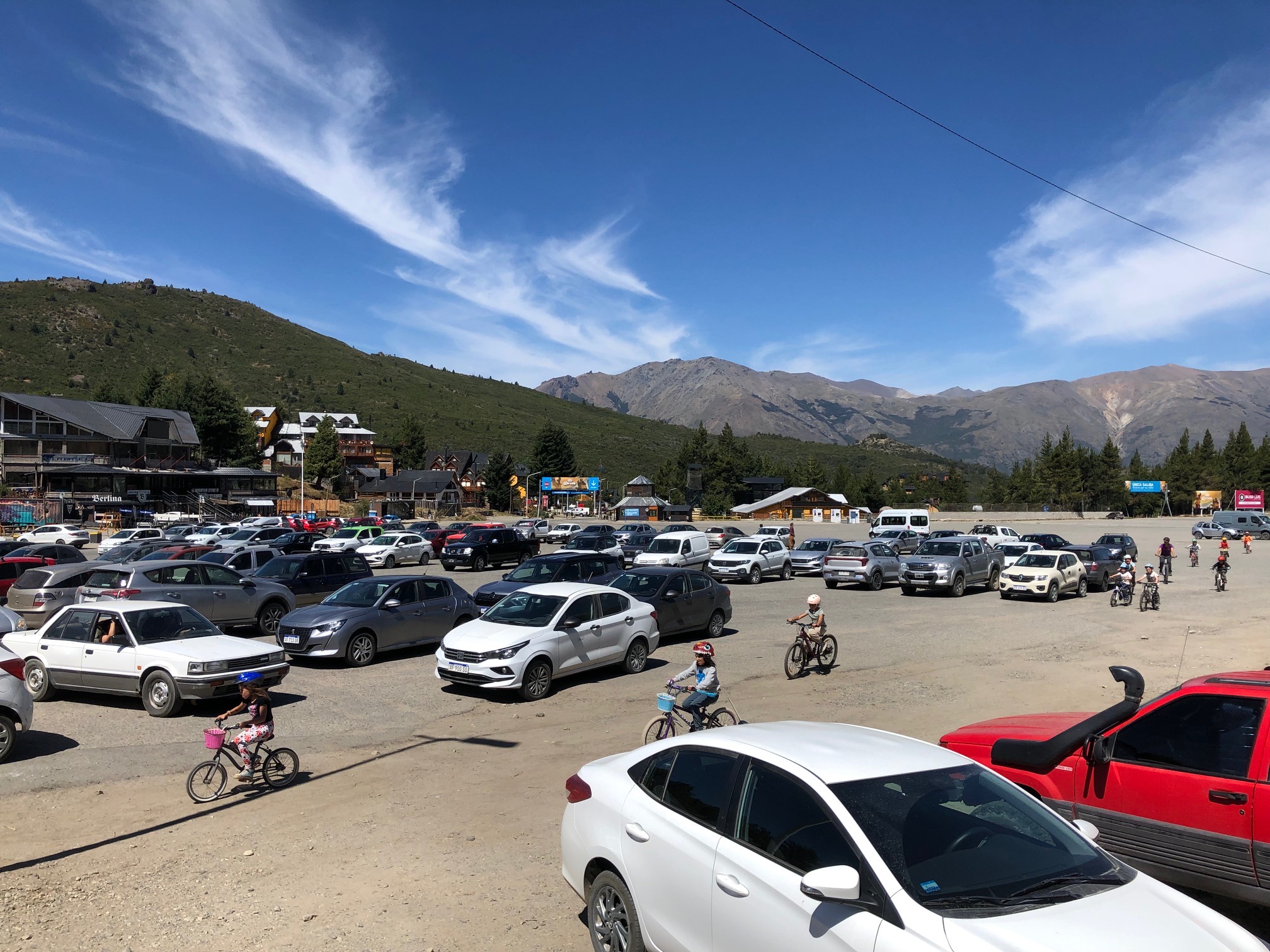
In Cholila there was a convenient public garden with shade and sprinklers running to wash grubby hands - brilliant, a good place to change rear brake pads.
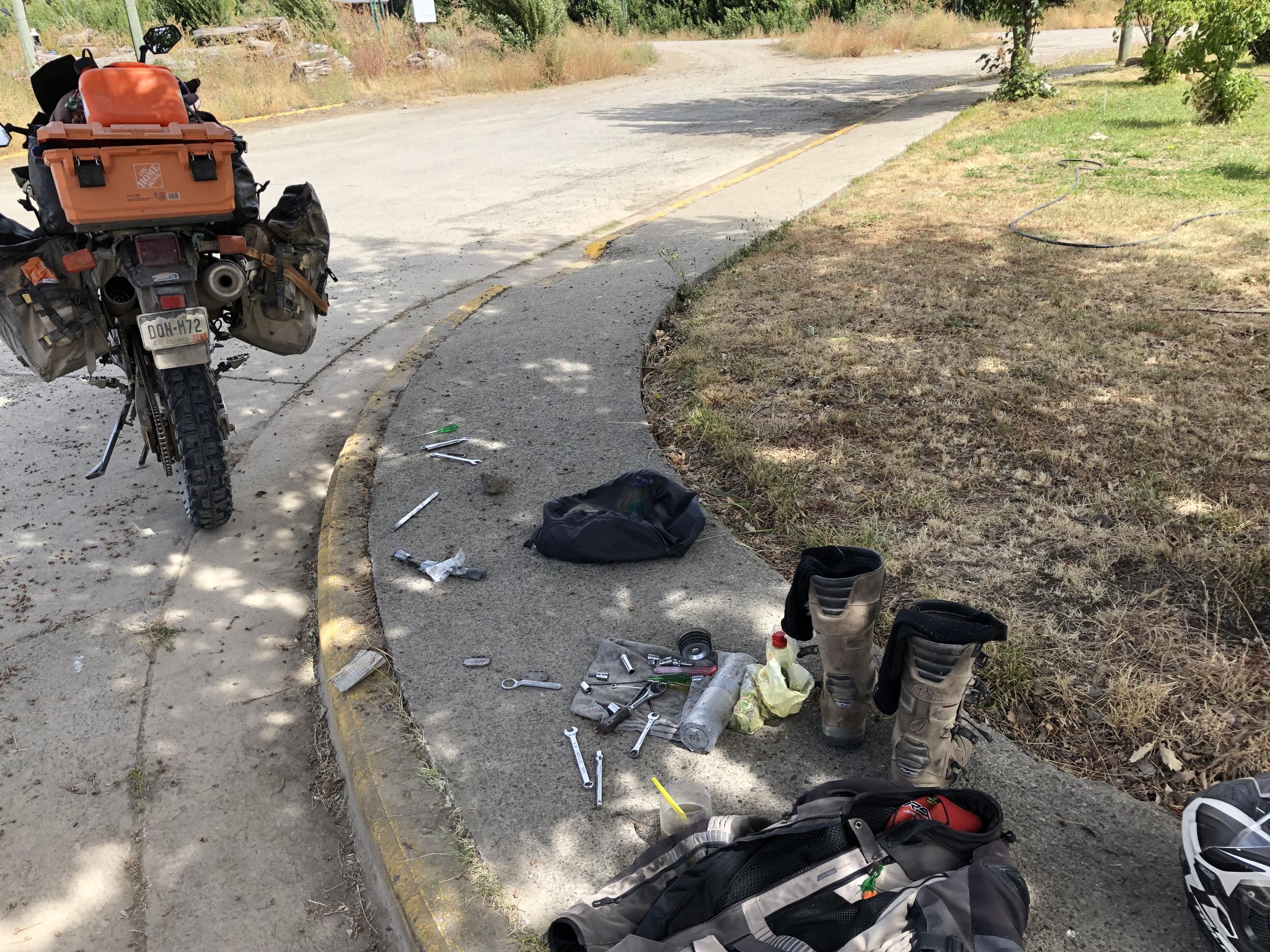
That was the third new set for the rear in 45,000km. The fronts have never been changed in this time - for all I know the fronts have been there since Japan.
I had mentioned this discrepancy way back to a motorcycle workshop bloke, theorising that the back picks up more abrasive crap from dirt roads. He most politely replied that no, it was down to rider habits. Ah ... best I give the right lever more attention than the pedal then.
While doing the work, Colin from Minnesota on a Triumph Tiger stopped and asked if all was well. We had a few laughs with similar travel experiences. He’d been aiming for a year of travel, now 15 months and counting.
Two Argentinian riders did the same. Maybe the Argentinians are not heartless bastards after all (from puncture episode). One worked as a lifeguard at a close by lake, had once worked on a Sydney beach doing the same.
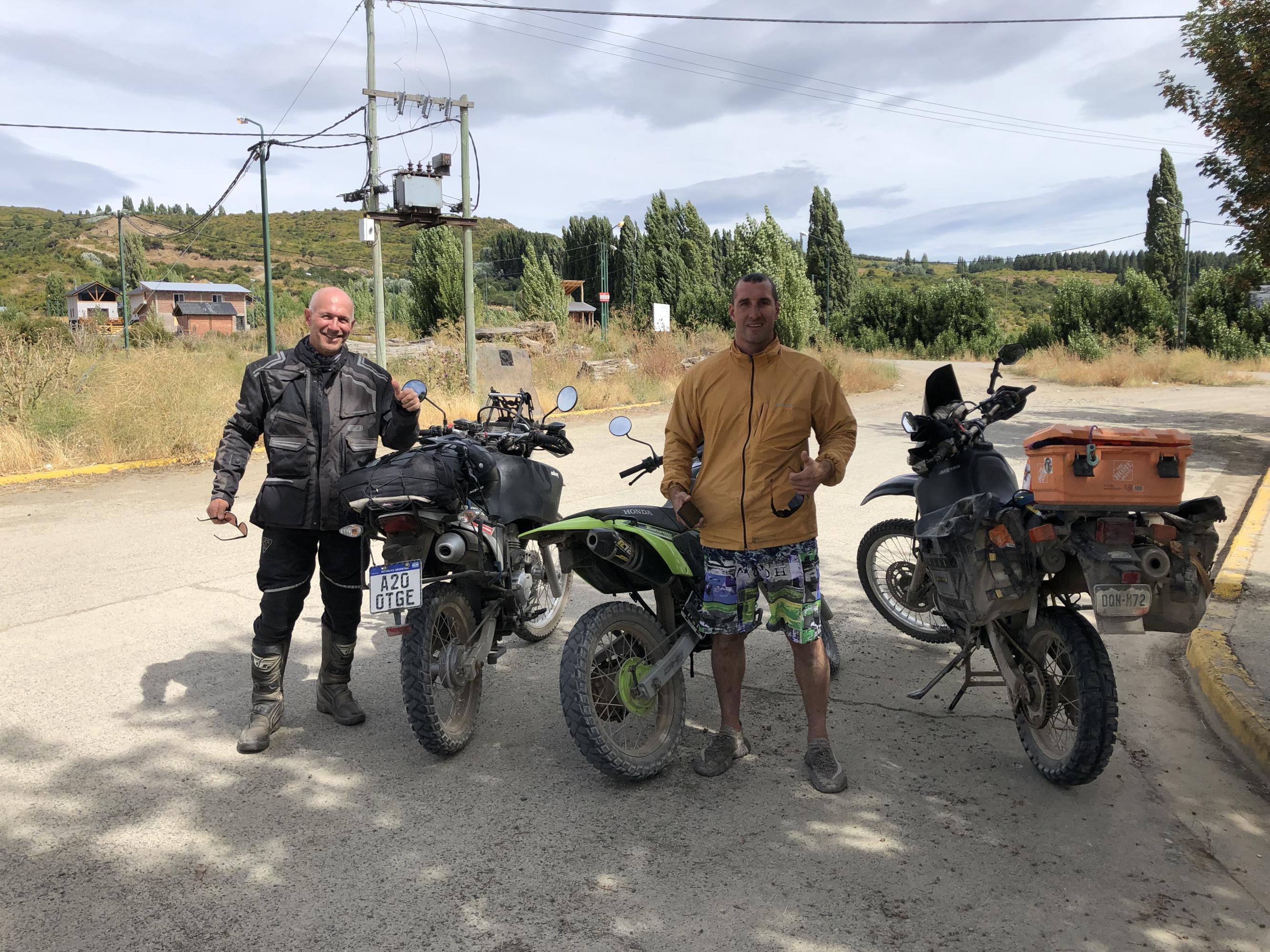
A lifeguard for a lake, really? Yep, the water gets real deep real quick and it’s real cold. Swimmers get into strife as a result.
Some days have been solitary, the only human contact being with servo attendants (by the way, there is no self serve anywhere in Latin America) and supermarket/restaurant staff. Verbal exchanges were then generally robotic.
Other days have brought many unexpected interactions. On the day of the brake pad change there was also
- a long, involved chat with a German/Italian couple including how he (a doctor) thought the German hospital system was broken
- a bloke from Nebraska who travelled around constructing pilot renewable energy farms
- an enthusiastic lady from Hong Kong who was keen to try hitch hiking for the first time
- Tito, an Argentinian rugby teacher passionate about his sport who will visit Sydney in 2027 for the World Cup
- Emma who ran our AirBnB and wanted to join me on the back
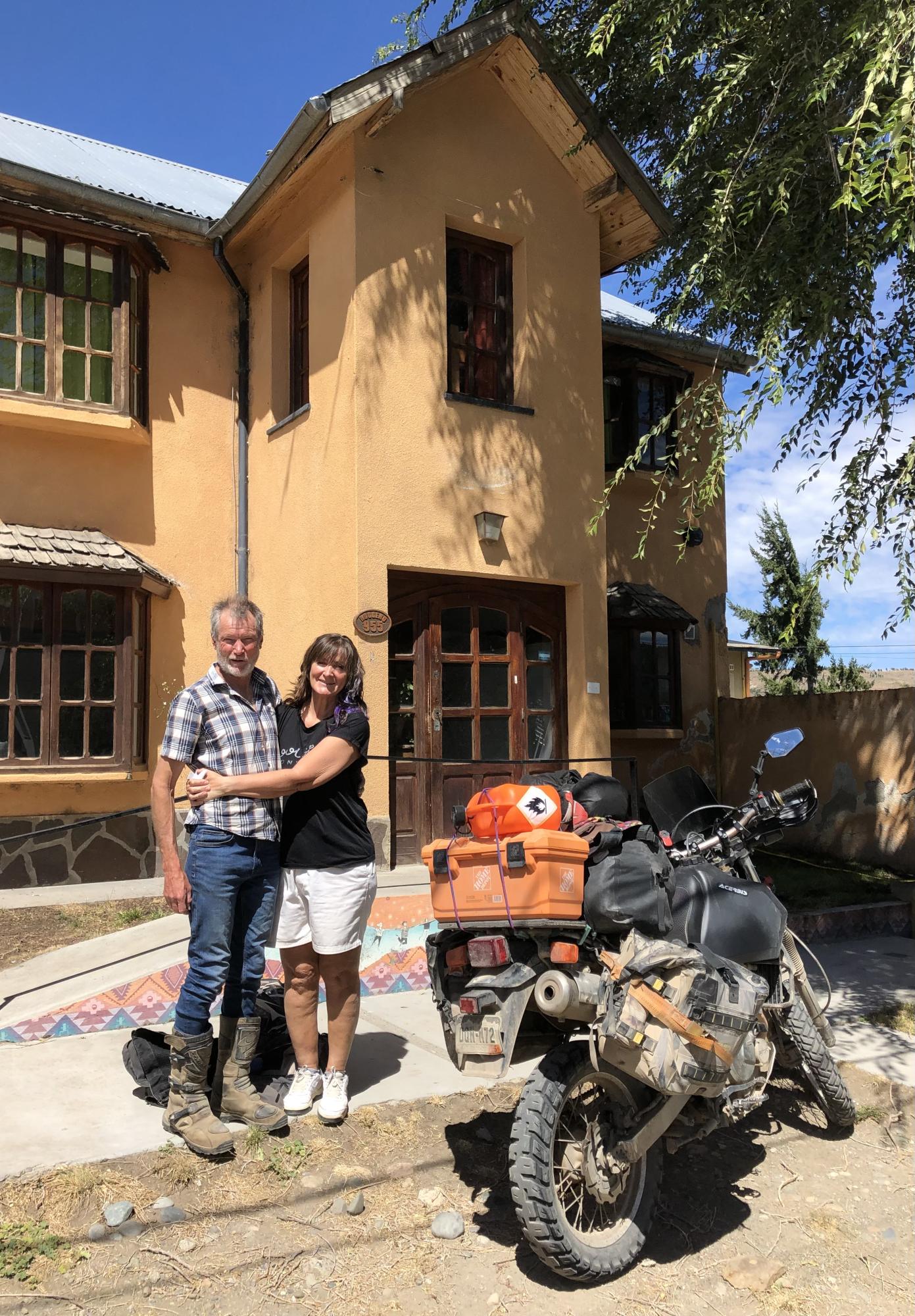
It was heartwarming to find that the Argentinians celebrate my mum’s birthday.
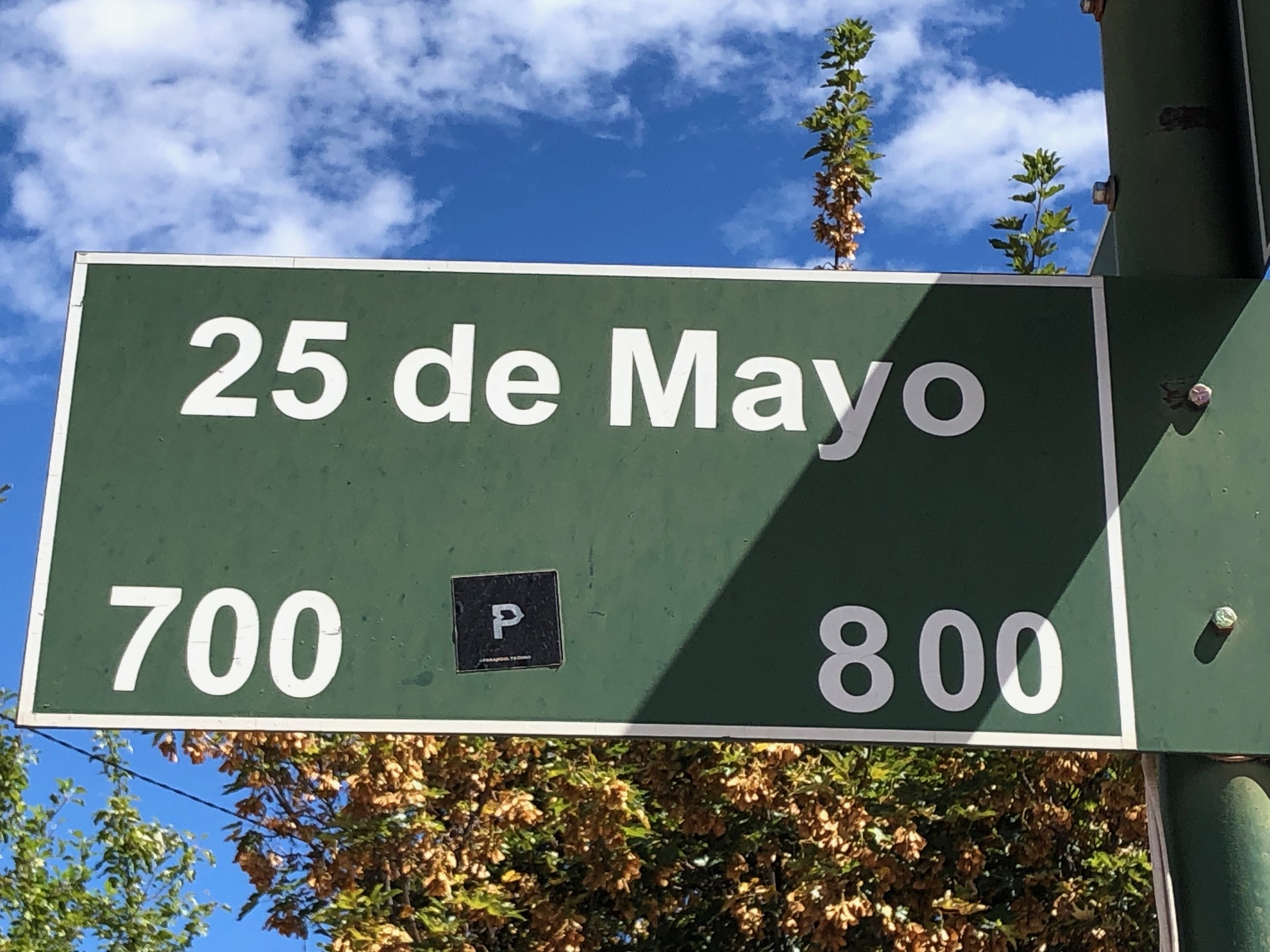
A revolution ended on that date in 1810.
It had taken ten days to receive an Australian police check, then another few days for Chile and I to come to an understanding: they could have $195 of mine and I could visit them.
Woo hoo! I took the first frontier possible - west from Esquel to Futaleufú.
It was pretty exciting seeing those big Andean peaks ahead, shared by the two countries.
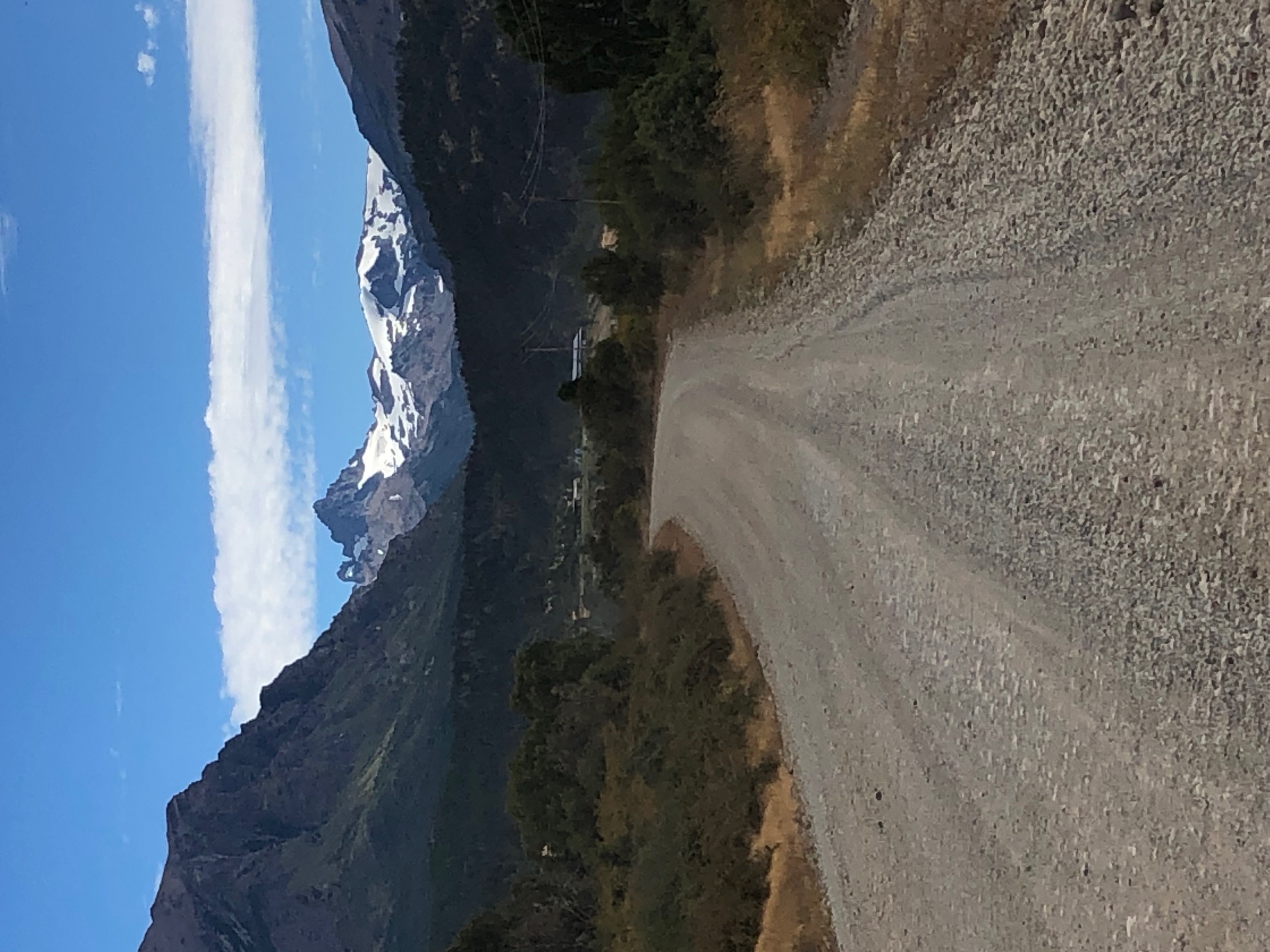
Chile is strict on biosecurity, so I forced most remaining salad down the cakehole beforehand.
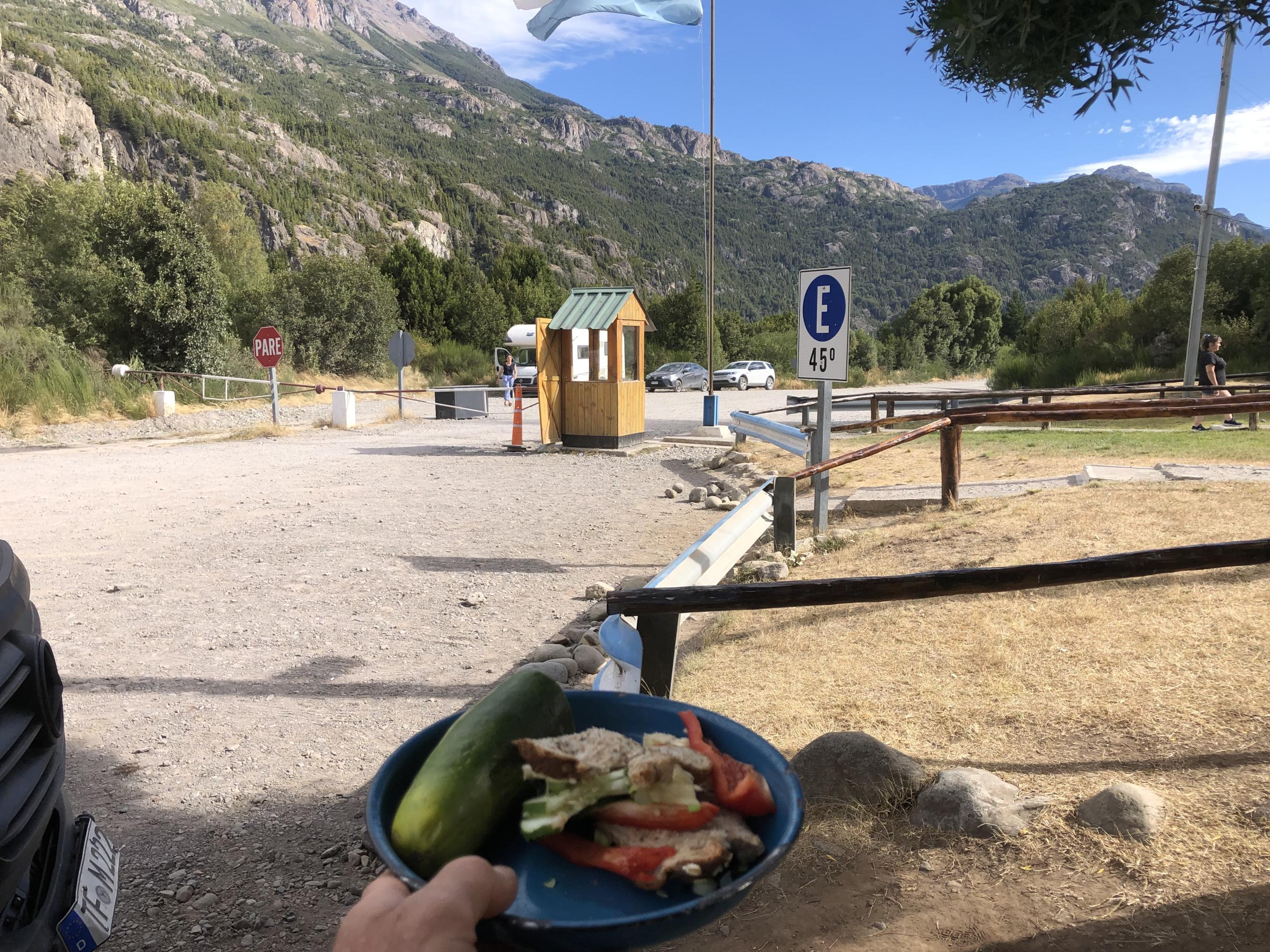
This couple in the big black Merc had shipped from Germany, along with their labrador Jack. How nice to travel together and even better to have your faithful hound along.
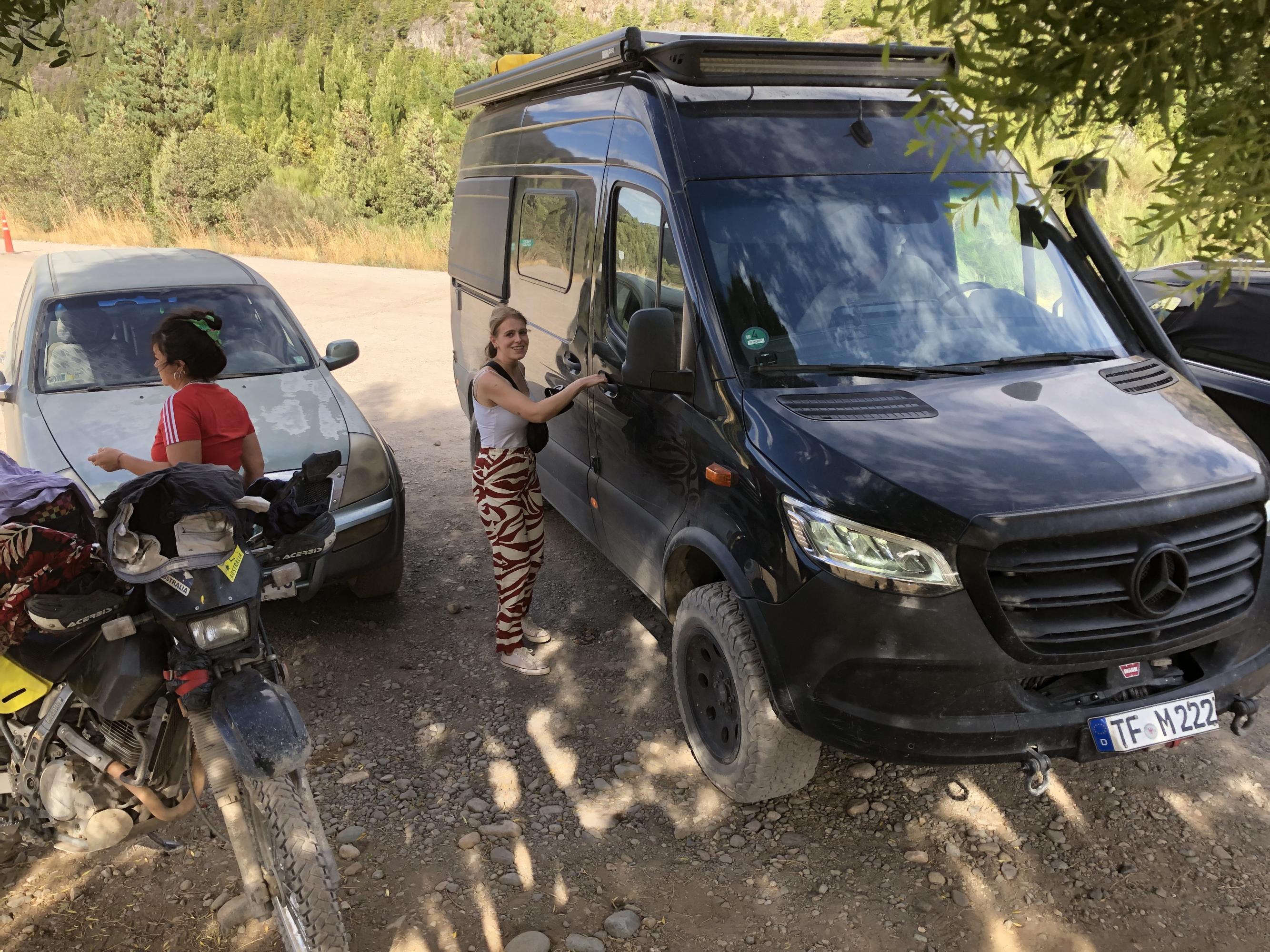
Finally.
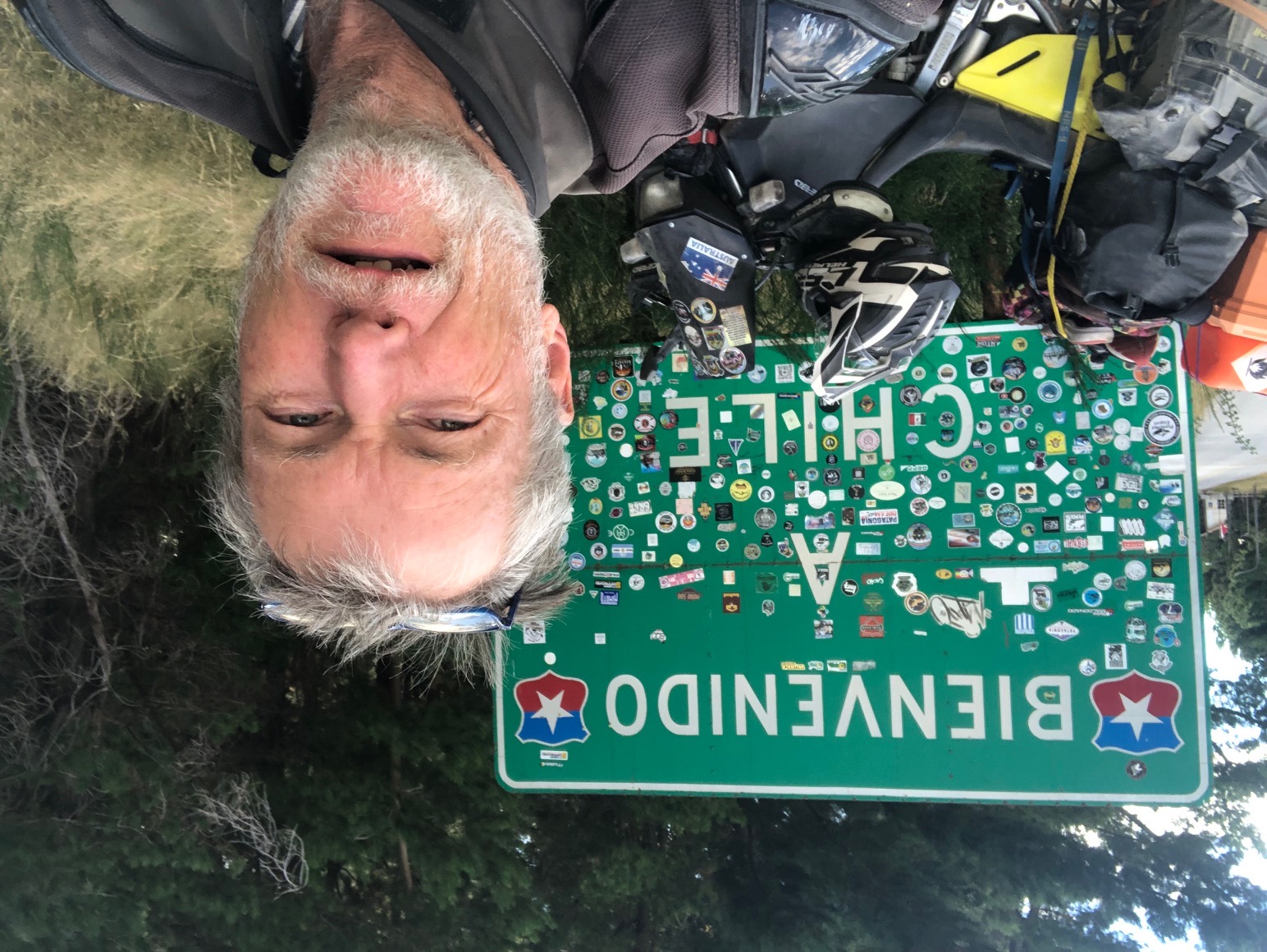
After all the build up and years of dreaming, one cheek was a little damp.

